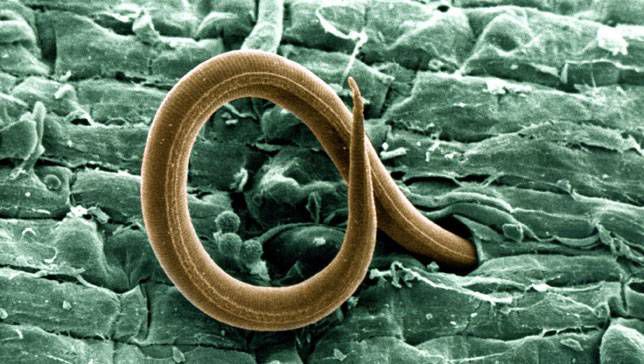A new paper, published in Nature by top scientists at Crowther Lab, reveals that the world’s largest animal populations are NOT found in the tropics, but instead found in Alaska, Siberia and Scandinavia.
The study is the first to map soil animal abundance on a global scale. It reveals:
- Nematodes are the most abundant animals on our planet – 4 in 5 animals are nematodes.
- Nematodes have a total biomass of 300 million tonnes = 80% of the human population.
- You can get 70,000 nematodes in one gram of soil.
- They play a critical role in soil nutrient cycling, plant growth and the climate.
- Soil animals do not follow the same patterns as above ground animals.
- The highest abundances are found in: Alaska, Siberia and Scandinavia
- The lowest abundances are found in: Sahara and Kalahari
This study shows that we know almost nothing about the living component of our soil. It will enable better climate change predictions and sustainable land management.
Groundbreaking research into the soil beneath our feet, published today in the journal Nature, transforms our understanding of life on land by revealing that the world’s largest animal populations are found in high-latitude sub-arctic soils.
The Crowther Lab study is the first to map the global distribution of soil nematodes, tiny creatures also known as roundworms. They make up an estimated four fifths of all terrestrial animals and play a critical role in soil nutrient cycling, plant growth and the climate.
The study provides conclusive evidence that the majority of the world’s animals live in high latitudes: 38.7% of soil nematodes exist in boreal forests and tundra across North America, Scandinavia and Russia; 24.5% in temperate regions; and only 20.5% in the tropics and sub-tropics.
It also calculates that the world’s population of soil nematodes is far greater than previously estimated, with 57 billion for every single human. They have a total biomass of around 300 million tonnes – approximately 80% of the combined weight of Earth’s human population of 7.7 billion people.
Dr. Johan Van den Hoogen, lead author of the study, said: “There’s an immense world hidden just beneath our feet that we barely understand. This study fundamentally changes our understanding of the distribution of life on land. We were amazed to find that nematodes are so abundant and that there are more animals in the arctic and sub-arctic than in the tropics – the opposite of what we see above ground.
“Soil organisms are the most important but least understood part of the Earth’s biosphere. Protecting biodiversity and developing effective climate change strategies will require us to model biological activity across the world’s soils and plan how best to manage ecosystems.”
Nematodes play a critical role in the cycling of carbon and nutrients and are essential to understanding biological activity in the soil. They feed on bacteria, fungi, plants and other soil organisms, fulfilling key roles in the food web. They play a significant role in influencing CO2 emissions from soils, determining whether carbon is locked up in soil organisms or released into the soil and the atmosphere. Their activity helps create healthy soils and conditions for plants to grow and capture carbon.[1]
Nematodes are generally more active at higher temperatures, so the large nematode populations in the arctic and sub-arctic make these regions very sensitive to warming. “These regions compose a major reservoir of soil carbon stocks, and may release much more carbon as a result of increased soil animal activity and a prolongation of the plant-growing season due to human-induced climate change,” states the research paper, Soil nematode abundance and functional group composition at a global scale.
Professor Tom Crowther, senior author of the study, said: “Predicting climate change requires that we understand global carbon and nutrient cycles. We currently have a great understanding of the physics and chemistry of our planet, but we know far less about the biological organisms that drive these cycles. Improving our understanding of these organisms at a global level is critical if we are going to understand and address climate change.
“Healthy soil communities are essential for the stability of ecosystems and the storage of carbon on land. Our research will help scientists to make better predictions about carbon cycling by developing models that reflect the impact of soil organisms. It will also enable land managers to make the right decisions in the fight against biodiversity loss and climate change by identifying soils which need to be restored to health.”
The Crowther Lab is a group of multi-disciplinary scientists studying the ecological processes that influence climate change, based at ETH Zürich, the world’s leading University in Earth and Environmental Sciences.
The study focused on the top 15cm of soil – the most biologically active zone – and calculated that around the world it is home to 4.4 x 10 to the power of 20 nematodes, or 57 billion for each human on the planet.
They took 6,759 soil samples representing every continent, and every environment from arctic tundra to tropical rainforest, and used microscopes to analyse the density of each type of nematode to generate a representative global dataset.
They used machine learning to determine how the abundance of each type of nematodes related to the climate, soil and vegetation at each sample site, identifying 73 different variables.
